Knowledge Corridor to Gain Boost as More Frequent Rail Runs Through It
/For years, the tag line has been “innovation runs through it.” In the coming year, there will also be more frequent rail service running through it, and that may make all the difference in the world.
When proponents of economic development in what’s known as “New England’s Knowledge Corridor” get together for a conference this fall, it will be with the backdrop of the three anchor cities that span two states – New Haven, Hartford, and Springfield – being more connected than ever, with the start of the new regular rail service between the cities just months away.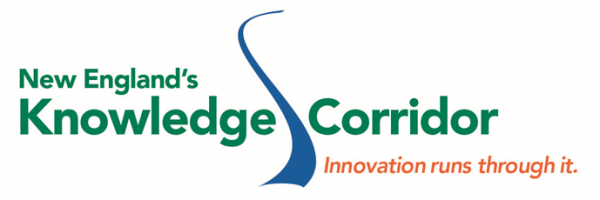
The half-day conference, “Leveraging the Knowledge Corridor’s Transportation Assets and Investments to Drive Economic Progress,” will be held at Union Station in Springfield on October 18. It will serve as the coalition’s 2017 “State of the Region” conference.
The keynote speaker will be Robert Puentes, President/CEO of the Eno Center for Transportation. Panelists will include five members of Congress from the region: Richard Neal and James McGovern from Massachusetts and John Larson, Rosa DeLauro, and Elizabeth Esty from Connecticut.
Plans also include talks by Connecticut Commissioner of Transportation James Redeker and his counterpart in the Bay State, Stephanie Pollack, Secretary/CEO of the Massachusetts Department of Transportation. Officials also anticipate releasing the results of the 2017 New England Knowledge Corridor Business Survey.
"In the Knowledge Corridor, we’re convinced that the transportation assets we have; new ones that will be coming online in the next year or two, plus; those we are planning to see realized over a longer range time line constitute the bedrock of a competitive 21st century economy that enables ready and affordable access to skilled workers, attractive markets and motivated consumers on a global scale," Tim Brennan, Chairman of New England Knowledge Corridor Partnership and Executive Director of the Pioneer Valley Planning Commission, told CT by the Numbers.
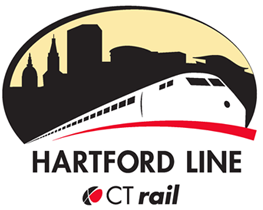
On Monday, Governor Dannel P. Malloy announced that a joint venture of TransitAmerica Services and Alternate Concepts has been selected as the service provider that will operate and manage service on the Hartford Line – which is expected to launch in May 2018.
Work is continuing throughout the summer, including grade crossing upgrades in Wallingford this month, as part of the overall upgrade of the New Haven-Hartford-Springfield rail line – now branded as the CTrail Hartford Line, with expanded service scheduled to being in 2018, according to transportation officials. Last month, construction in Meriden and Windsor included track construction upgrades.
New England’s Knowledge Corridor is an interstate partnership of regional economic development, planning, business, tourism and educational institutions that work together to advance the region’s economic progress. The region “transcends political boundaries,” officials point out, and it comprises the Hartford, Springfield and New Haven metro areas and is centered on seven counties in the two states, underscoring the area’s “rich tradition of inventions, research and higher education.”
The New Haven-Hartford-Springfield (NHHS) Rail Program is a partnership between the State of Connecticut, Amtrak and the Federal Railroad Administration. The goal is to provide those living, working or traveling between New Haven, Hartford and Springfield with high speed rail service equal to the nation’s best rail passenger service, officials emphasize.
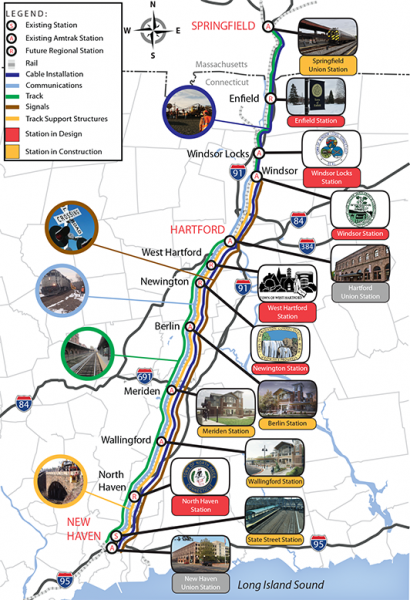 The Hartford Line will act as a regional link with connections to existing rail services, including Metro-North, Shoreline East, and Amtrak Acela high-speed rail services on both the New Haven Line to New York and on the Northeast Corridor to New London and Boston. There will also be direct bus connections to the Bradley Airport Flyer and to CTfastrak. With a heightened level of direct and connecting service linking the region, the hope is that towns along the future Hartford Line will become magnets for growth – ideal places to live and to relocate businesses that depend on regional markets and travel.
The Hartford Line will act as a regional link with connections to existing rail services, including Metro-North, Shoreline East, and Amtrak Acela high-speed rail services on both the New Haven Line to New York and on the Northeast Corridor to New London and Boston. There will also be direct bus connections to the Bradley Airport Flyer and to CTfastrak. With a heightened level of direct and connecting service linking the region, the hope is that towns along the future Hartford Line will become magnets for growth – ideal places to live and to relocate businesses that depend on regional markets and travel.
All of which dovetails perfectly with the “selling points” routinely used to promote the Corridor:
- Academic Powerhouse – One of the country’s highest academic concentrations and largest capacities for research, with 41 colleges and universities and 215,000 students
- Exceptional Achievement – Consistently among the nation’s top 10 in percentage of the population with advanced degrees, science-engineering doctorates and new patents registered
- Big, Concentrated Market – The nation’s 20th largest metro region, with over 2.77 million people, is comparable to Denver and St. Louis, but with twice their population density, which means ready access to labor and consumers
- Large Workforce – A labor force of 1.34 million, 50% larger than the Charlotte metro area
- Business Hub – 64,000 businesses – 60 percent more than the Austin metro
"Providing frequent, reliable, commuter rail service connecting New Haven-Hartford-Springfield, the three major cities that anchor the Knowledge Corridor and its over 2.7 million people, will be nothing short of a game changer enabling the cross border region’s to reach its potential as an economic powerhouse within New England while simultaneously linking it to the white hot economies found in the Boston and New York City mega regions," Brennan added.
The CTrail Hartford Line rail service will operate at speeds up to 110 mph, cutting travel time between Springfield and New Haven to as little as 81 minutes. Travelers at New Haven, Wallingford, Meriden, Berlin, Hartford, Windsor, Windsor Locks and Springfield will be able to board trains approximately every 30 minutes during the peak morning and evening rush hour and hourly during the rest of day, with direct or connecting service to New York City and multiple frequencies to Boston or Vermont (via Springfield). New train stations also are in various stages of development in North Haven, Newington, West Hartford and Enfield.
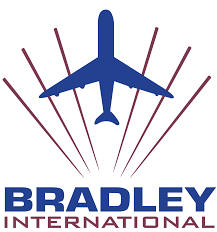 Also, very much a part of the strengthening transportation options with the potential to spur economic development is Bradley International Airport, which recently has added international flights on Aer Lingus (last year) and Norwegian Air (last month) and a direct-to-San Francisco route via United Airlines.
Also, very much a part of the strengthening transportation options with the potential to spur economic development is Bradley International Airport, which recently has added international flights on Aer Lingus (last year) and Norwegian Air (last month) and a direct-to-San Francisco route via United Airlines.
Connecticut Airport Authority Executive Director Kevin A. Dillon said the aim is to “build on Bradley’s strengths and continue our focus to deliver more convenience and connectivity for our region. Flying to Europe from Bradley has never been easier and more affordable.”
The Connecticut Department of Transportation (CTDOT) conducted a bidding process and cost-benefit analysis for the Hartford Line program and selected TransitAmerica Services and Alternate Concepts, which are forming a joint venture solely for the purpose of serving the Hartford Line. This marks the first time that CTDOT has been able to select and contract with an experienced service provider for a major transportation program, a more cost-efficient alternative to the agency creating a separate internal unit and hiring employees to manage the Hartford Line, according to state officials.
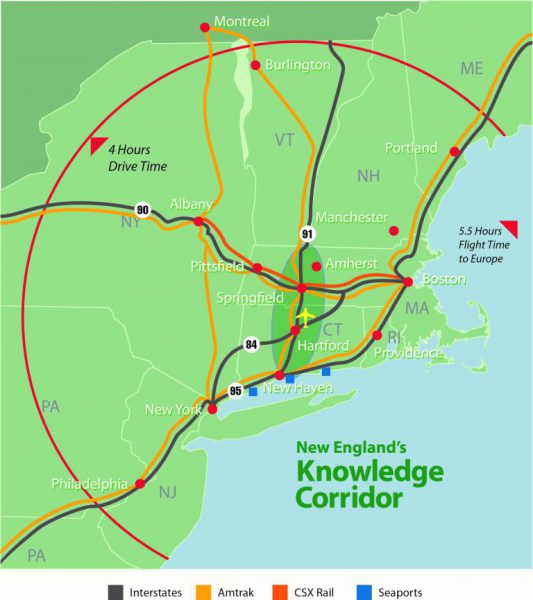


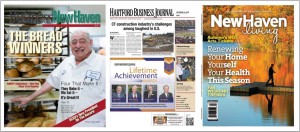 Each monthly addition of New Haven Living was nearly identical to Hartford Magazine, usually with a handful of New Haven-focused articles and features added. The Courant reported that it made the decision while evaluating opportunities to invest in higher-growth areas and the cost of distribution in Greater New Haven.
Each monthly addition of New Haven Living was nearly identical to Hartford Magazine, usually with a handful of New Haven-focused articles and features added. The Courant reported that it made the decision while evaluating opportunities to invest in higher-growth areas and the cost of distribution in Greater New Haven. A limited number of promotional copies will be limited “based on a proprietary algorithm for the support of our advertisers,” Young noted. He also indicated that plans are in the works to expand the publication’s
A limited number of promotional copies will be limited “based on a proprietary algorithm for the support of our advertisers,” Young noted. He also indicated that plans are in the works to expand the publication’s 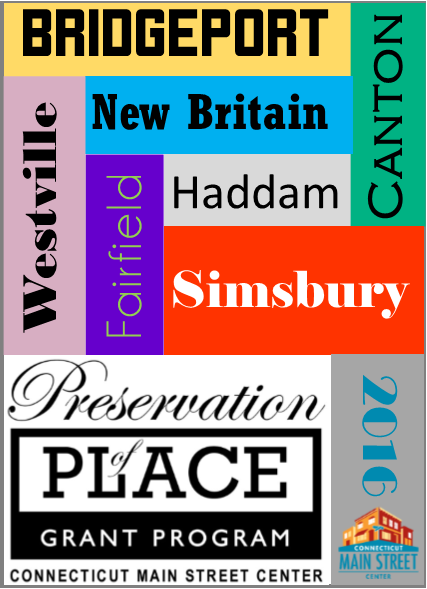


 Diane Brown is branch manager of the New Haven Free Public Library’s Stetson Branch. Known as the “urban librarian” to her patrons, Brown develops valuable programs and services to meet the needs of the underserved residents in a community with high rates of poverty, crime and low literacy levels. Under Brown’s leadership, the library has been transformed into a true community center. She brings residents together by hosting cultural and educational events such as an international “pop up” festival, art exhibits, lectures and health fairs, according to officials. She has been praised for facilitating an afterschool tutoring program for K-8 students and providing opportunities for children and their families to spend time together by establishing history and game nights.
Diane Brown is branch manager of the New Haven Free Public Library’s Stetson Branch. Known as the “urban librarian” to her patrons, Brown develops valuable programs and services to meet the needs of the underserved residents in a community with high rates of poverty, crime and low literacy levels. Under Brown’s leadership, the library has been transformed into a true community center. She brings residents together by hosting cultural and educational events such as an international “pop up” festival, art exhibits, lectures and health fairs, according to officials. She has been praised for facilitating an afterschool tutoring program for K-8 students and providing opportunities for children and their families to spend time together by establishing history and game nights.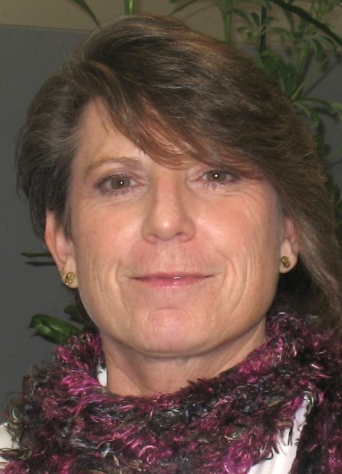 Elizabeth G. Rumery, library director for the Avery Point Campus Library at the University of Connecticut in Groton, has “transformed the library into a welcoming and dynamic place for students by modernizing the facility to meet the needs of 21st century learners.” Officials indicate that she worked with contractors and school administrators on renovating the library, with improvements including new media rooms and collaborative study spaces for students and faculty.
Elizabeth G. Rumery, library director for the Avery Point Campus Library at the University of Connecticut in Groton, has “transformed the library into a welcoming and dynamic place for students by modernizing the facility to meet the needs of 21st century learners.” Officials indicate that she worked with contractors and school administrators on renovating the library, with improvements including new media rooms and collaborative study spaces for students and faculty.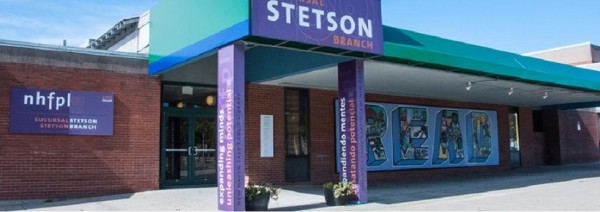 The librarians join “an esteemed group of award recipients who are recognized as being catalysts for powerful individual and community change.” Only 80 librarians have received the national award since its inception in 2008, including six from Connecticut. In 2012, the recipients were Rachel Hyland, Tunxis Community College Library in Farmington, and Rae Anne Locke, Saugatuck Elementary "Secret Garden" Library in Westport. The 2011 winners included Jennifer O. Keohane, The Simsbury Public Library and Michelle Luhtala, New Canaan High School Library.
The librarians join “an esteemed group of award recipients who are recognized as being catalysts for powerful individual and community change.” Only 80 librarians have received the national award since its inception in 2008, including six from Connecticut. In 2012, the recipients were Rachel Hyland, Tunxis Community College Library in Farmington, and Rae Anne Locke, Saugatuck Elementary "Secret Garden" Library in Westport. The 2011 winners included Jennifer O. Keohane, The Simsbury Public Library and Michelle Luhtala, New Canaan High School Library.
 The Bridgeport-Stamford-Norwalk region ranked #5 in physical health, #43 in financial health, #58 in community ties, #63 in sense of purpose and #88 in social health.
The Bridgeport-Stamford-Norwalk region ranked #5 in physical health, #43 in financial health, #58 in community ties, #63 in sense of purpose and #88 in social health.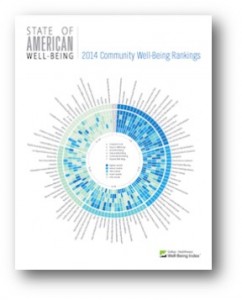
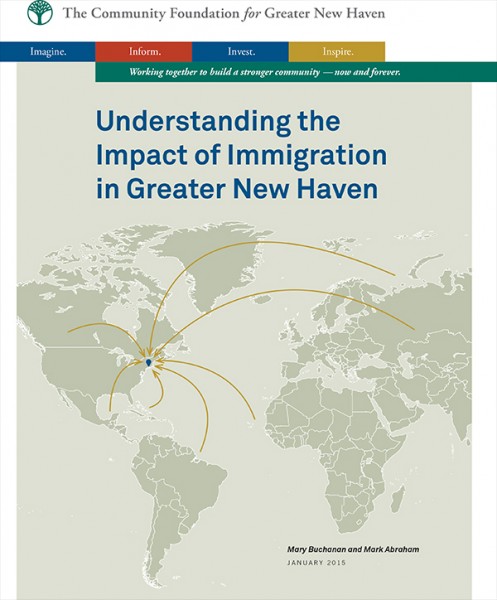
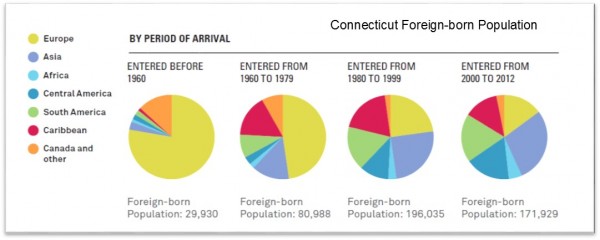
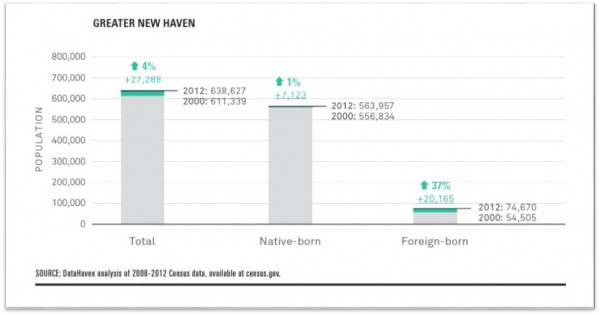 In New Haven’s neighborhoods in particular, the boost in immigrants has revitalized communities and spurred new businesses. From 1970 to 1990, the foreign-born population in most New Haven neighborhoods remained flat or declined, and these neighborhoods suffered from overall population decline—similar to other central city neighborhoods in post-industrial cities. Since 1990, the report found, the foreign-born population in many city neighborhoods has rebounded sharply, particularly in areas such as Edgewood, West River, Fair Haven, and the Hill. These areas have seen a large influx of population and business overall.
In New Haven’s neighborhoods in particular, the boost in immigrants has revitalized communities and spurred new businesses. From 1970 to 1990, the foreign-born population in most New Haven neighborhoods remained flat or declined, and these neighborhoods suffered from overall population decline—similar to other central city neighborhoods in post-industrial cities. Since 1990, the report found, the foreign-born population in many city neighborhoods has rebounded sharply, particularly in areas such as Edgewood, West River, Fair Haven, and the Hill. These areas have seen a large influx of population and business overall.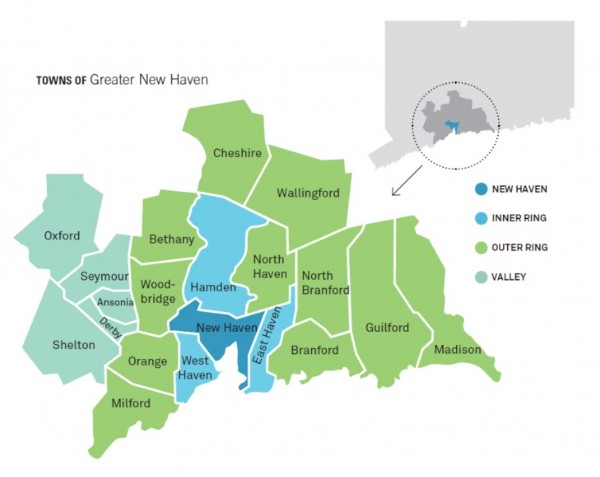
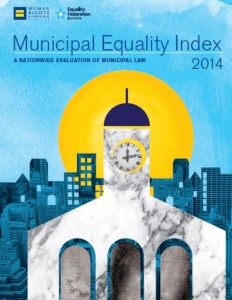
 with the Equality Federation, provide “a revealing snapshot of LGBT equality in municipalities of varying sizes, and from every state in the nation,” the report noted.
with the Equality Federation, provide “a revealing snapshot of LGBT equality in municipalities of varying sizes, and from every state in the nation,” the report noted.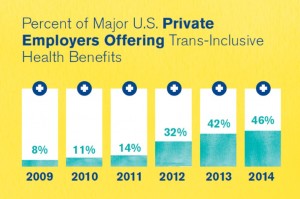 tive state laws.
tive state laws.

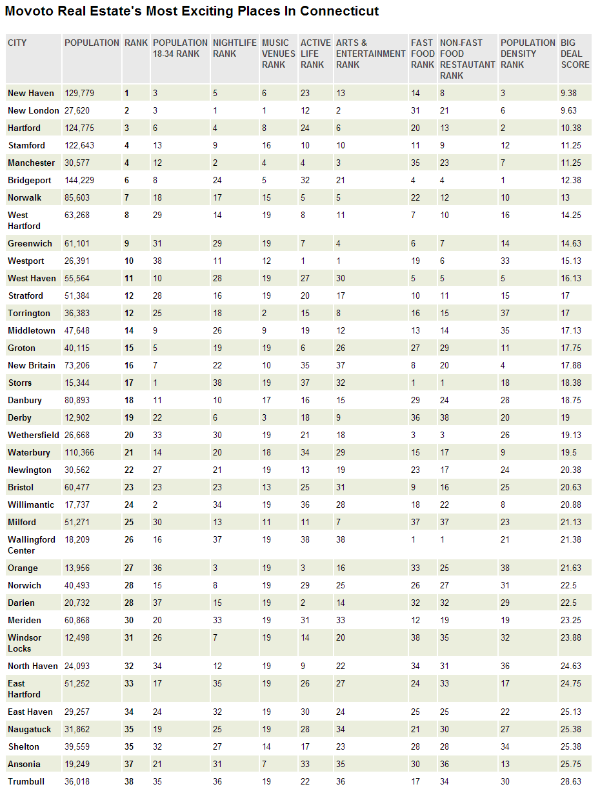
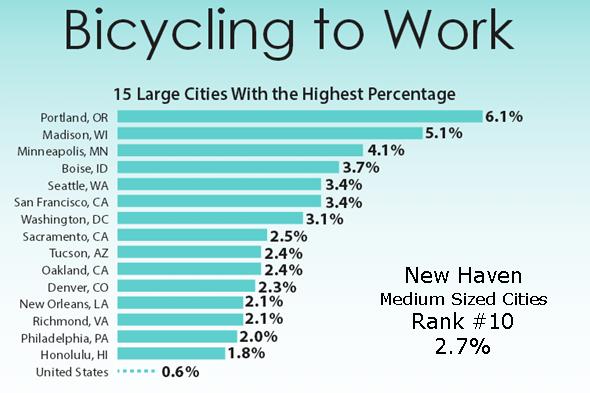 y bicycle remains low, according to the U.S. Census American Community Survey. In 1980, 0.5 percent of workers commuted by bicycle. This rate dropped to 0.4 percent in 1990, where it remained in 2000, before nudging upward in the latest survey.
y bicycle remains low, according to the U.S. Census American Community Survey. In 1980, 0.5 percent of workers commuted by bicycle. This rate dropped to 0.4 percent in 1990, where it remained in 2000, before nudging upward in the latest survey.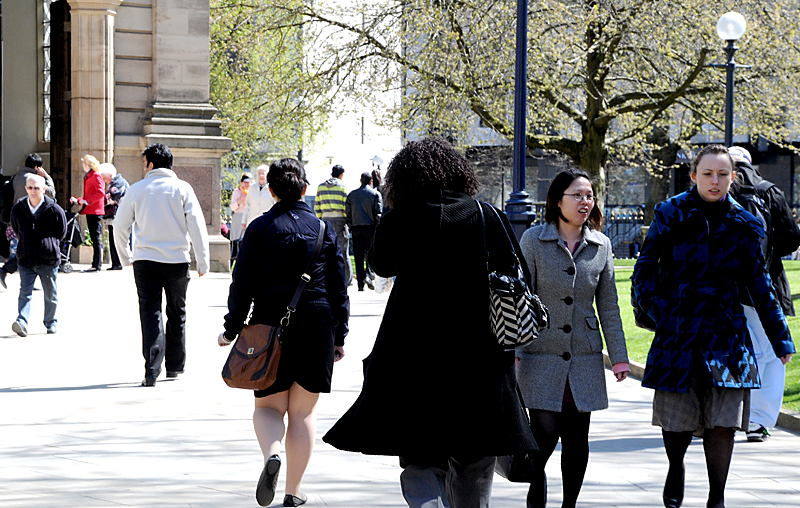 Among the nation’s medium sized-cities, (with p
Among the nation’s medium sized-cities, (with p opulations between 100,000 and 199,999) New Haven ranks at #5 with 12.4 percent walking to work and at #10 with 2.7 percent of the population using bicycles to get to work. Hartford ranks at #10 among the top walk-to-work medium sized cities with 8.2 percent, and did not reach the top 15 in bicyclists.
opulations between 100,000 and 199,999) New Haven ranks at #5 with 12.4 percent walking to work and at #10 with 2.7 percent of the population using bicycles to get to work. Hartford ranks at #10 among the top walk-to-work medium sized cities with 8.2 percent, and did not reach the top 15 in bicyclists.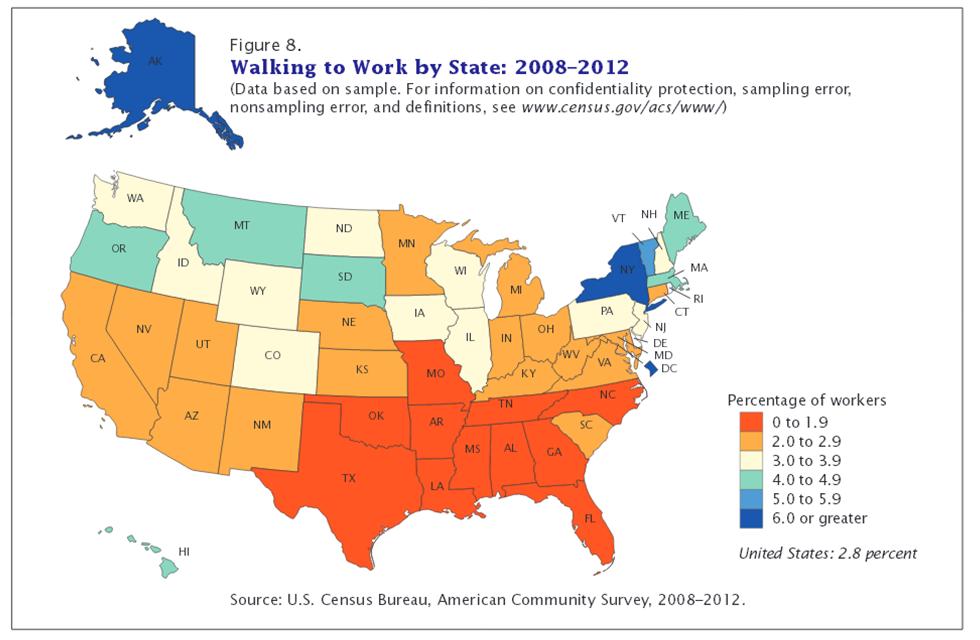 average commute to work in Connecticut is about 25 minutes, ranging from 28 minutes in Fairfield County, 27 minutes in Litchfield County, 26 minutes in Windham County, 25 minutes in Middlesex County and Tolland County, to 24 minutes in New Haven County, 23 minutes in New London County, and 22 minutes in Hartford County.
average commute to work in Connecticut is about 25 minutes, ranging from 28 minutes in Fairfield County, 27 minutes in Litchfield County, 26 minutes in Windham County, 25 minutes in Middlesex County and Tolland County, to 24 minutes in New Haven County, 23 minutes in New London County, and 22 minutes in Hartford County. zed Cities that were ranked, New Haven ranked #42 (up from #65 last year) and Bridgeport-Norwalk-Stamford
zed Cities that were ranked, New Haven ranked #42 (up from #65 last year) and Bridgeport-Norwalk-Stamford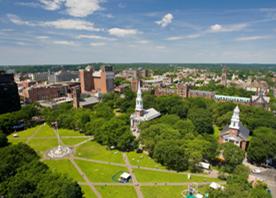 ranked at #58 (up from #85 last year) and saw the 10th largest advance among the medium sized cities.
ranked at #58 (up from #85 last year) and saw the 10th largest advance among the medium sized cities.


























